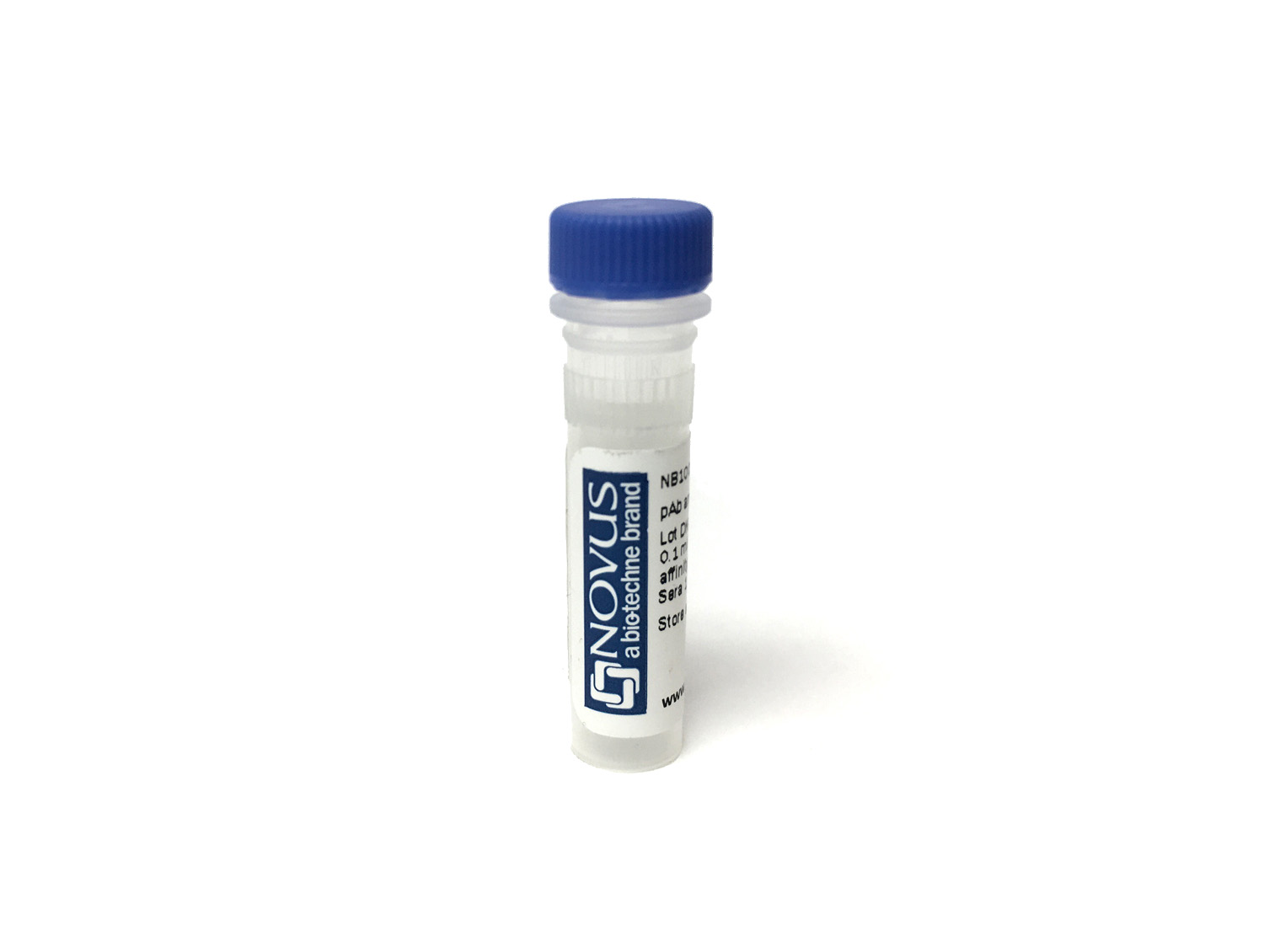Macrophage Antibody (EP-3)
Novus Biologicals, part of Bio-Techne | Catalog # NBP1-42178

Key Product Details
Species Reactivity
Human
Applications
Immunohistochemistry, Immunohistochemistry-Frozen, Immunohistochemistry-Paraffin
Label
Unconjugated
Antibody Source
Monoclonal Mouse IgM Clone # EP-3
Concentration
Please see the vial label for concentration. If unlisted please contact technical services.
Product Specifications
Immunogen
Made to Macrophage protein from human thymus
Specificity
Recognizes an antigen associated with the cytoplasm of human macrophages in the thymus and other lymphoid tissues.
Clonality
Monoclonal
Host
Mouse
Isotype
IgM
Applications for Macrophage Antibody (EP-3)
Application
Recommended Usage
Immunohistochemistry
1:10-1:500
Immunohistochemistry-Frozen
1:10-1:500
Immunohistochemistry-Paraffin
1:10-1:500
Application Notes
Monoclonal antibody EP-3 produces a strong cytoplasmic staining pattern of cortical thymic macrophages in formalin fixed, paraffin embedded tissues specimens. It may therefore be used as a marker of this cell type and of tumors derived from the macrophag
Formulation, Preparation, and Storage
Purification
IgM purified
Formulation
PBS
Preservative
0.02% Sodium Azide
Concentration
Please see the vial label for concentration. If unlisted please contact technical services.
Shipping
The product is shipped with polar packs. Upon receipt, store it immediately at the temperature recommended below.
Stability & Storage
Store at 4C. Do not freeze.
Background: Macrophage
Alternate Names
EC 5.3.2.1, EC 5.3.3.12, GIFmacrophage migration inhibitory factor, GLIF, Glycosylation-inhibiting factor, L-dopachrome isomerase, L-dopachrome tautomerase, macrophage migration inhibitory factor (glycosylation-inhibiting factor), MMIF, Phenylpyruvate tautomerase
Additional Macrophage Products
Product Documents for Macrophage Antibody (EP-3)
Product Specific Notices for Macrophage Antibody (EP-3)
This product is for research use only and is not approved for use in humans or in clinical diagnosis. Primary Antibodies are guaranteed for 1 year from date of receipt.
